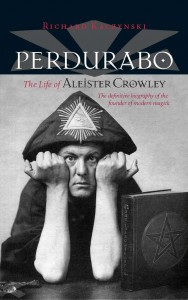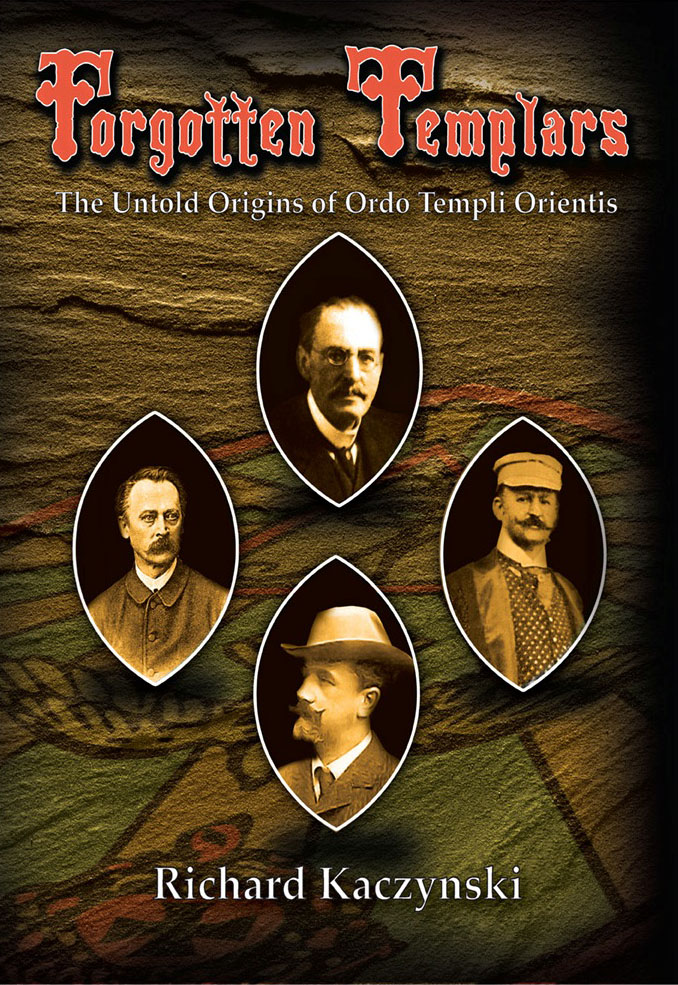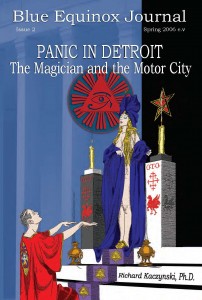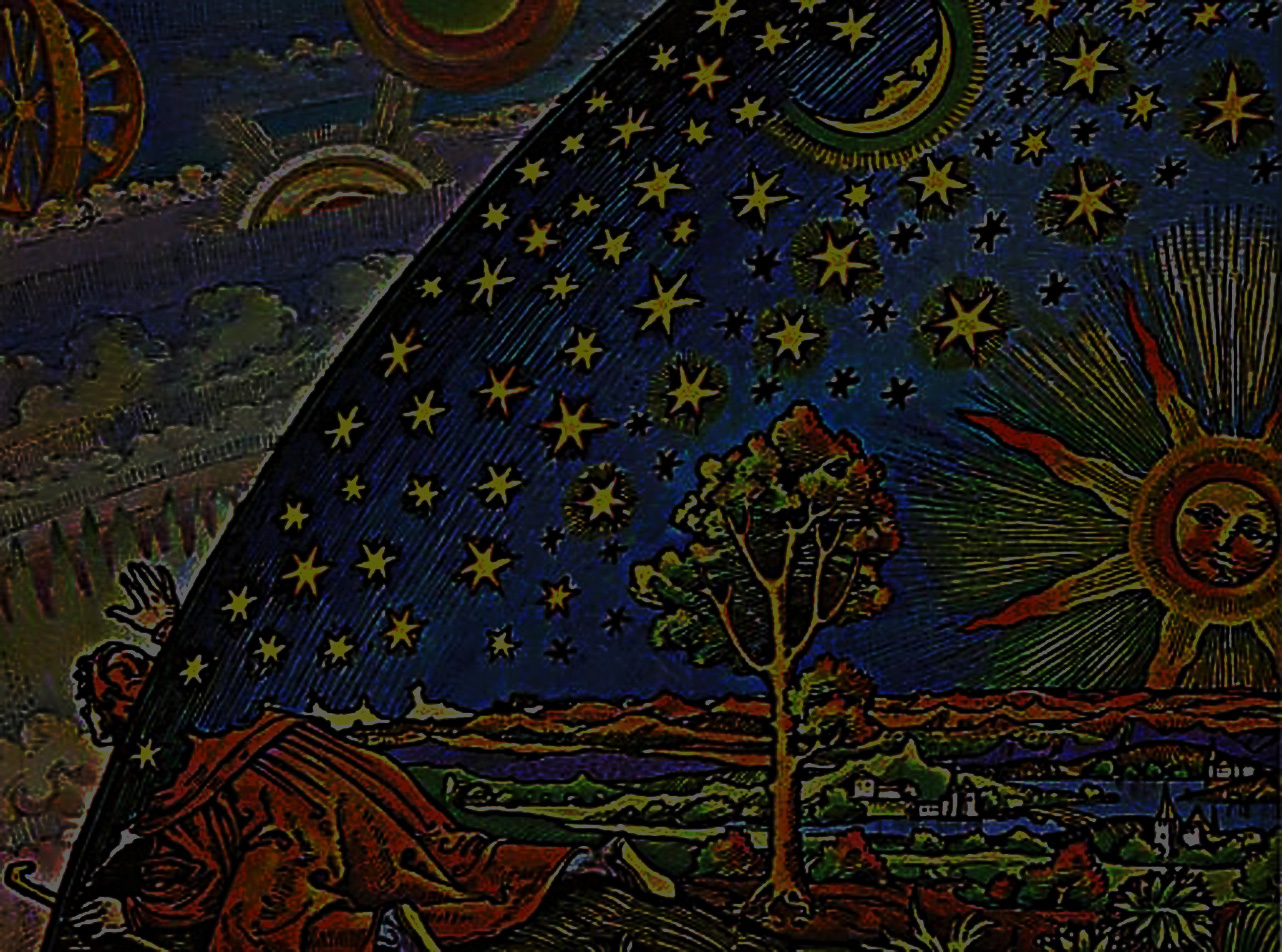Here is a fairly comprehensive list of presentations that I give in my travels, although I add new things frequently and also take requests for topics not listed. All talks use standard theatre style seating and an LCD projector, and are suitable for all audiences unless otherwise indicated. Running times are approximate and can be adjusted slightly in either direction.
 Perdurabo: The Life of Aleister Crowley (flexible 60–90 minutes; requires audio)
Perdurabo: The Life of Aleister Crowley (flexible 60–90 minutes; requires audio)
The life and career of magician Aleister Crowley are surrounded by controversy and, unsurprisingly, many urban legends. This workshop is based on the critically acclaimed biography Perdurabo: The Life of Aleister Crowley. It explores the facts about the man who called himself “The Great Beast,” and knocks down the straw man that the gutter press labeled “The Wickedest Man in the World.” Particular attention will be paid to Crowley’s magick, and how his career as a magician influenced every aspect of his life.
Sex and Sex Magick in the Victorian Age (90 minutes)
The 19th and early 20th centuries were a hotbed of discourse on intercourse which spilled over into religion and esotericism. Beginning with the seminal works of Gnostic saints Richard Payne Knight, J.G.R. Forlong, Richard Burton and Hargrave Jennings, we’ll uncover both the literature and practice of sacred sexuality as it sprung up before and beside Ordo Templi Orientis. Come one, come all to hear goodies about:
- the Golden Dawn’s favorite sexual mystic, Thomas Lake Harris, who taught about breathing exercises, group marriage, and the fairies living in your breasts
- the sexual mischief of Golden Dawn wanna-be’s Madame and Theo Horos
- the less than Rosy relationship between sex magick pioneers Hargrave Jennings and Paschal Beverly Randolph
- Carl Kellner’s encounter with sacred sexuality and its entry into Ordo Templi Orientis
- the unlikely two degrees of separation between Crowley and New York tantric initiator Oom the Omnipotent (and it doesn’t involve Kevin Bacon)
- Ida Craddock’s tell-all book about her marriage to an angel with godlike technique
- Clément du Saint-Marcq’s strange yet compelling argument for what really happened at the Last Supper.
 Forgotten Templars: The Untold Origins of Ordo Templi Orientis (90 minutes)
Forgotten Templars: The Untold Origins of Ordo Templi Orientis (90 minutes)
An unlikely cocktail of actors and musicians, doctors and merchants, anarchists and sexual reformers populated the occult underground of the late nineteenth century. One by-product of this strange brew was the magical order known as Ordo Templi Orientis, or the Order of Oriental Templars, with its controversial mix of esoteric Freemasonry, yoga and sex magic. While its name is familiar thanks to its second Grand Master, Edwardian enfant terrible Aleister Crowley, its origins have subsisted as shadowy mytho-history. Until now. This revelatory study brings into sharp focus the perfect storm of personalities, movements, and circumstances that gave rise to one of the largest and most influential secret societies of our time. It is a story that has waited a century to be told.
The Thoth Tarot in Popular Culture (90 or 180 minutes; requires audio)
As one of the most popular Tarot decks in history, the Thoth Tarot has left an indelible imprint on popular culture. Despite the 1944 publication of its accompanying text, The Book of Thoth, the deck itself was not printed in the lifetime of either of its principals. Since the deck’s first publication circa 1970, however, the richly layered symbolism of occult philosopher Aleister Crowley (1875–1947) and arresting illustration work of artist executant Frieda Lady Harris (a 1877–1962) has caught the eye—if not captured the imagination—of visual artists across a variety of mediums. The Thoth Tarot has consequently turned up in television programs, movies, graphic novels and popular music. This presentation will illustrate these appearances and demonstrate how the Thoth Tarot has become ensconced in the visual lexicon of popular culture.
The Method of Science, the Aim of Religion: The Scientific Method and How To Apply It to Magical Practice (90 minutes)
A common assertion in ritual magick is that magicians apply the scientific method to spiritual practice, following rigorous rules in their rituals and keeping detailed records of their activities. However, few teachers actually discuss the scientific method. This talk will describe how to apply research methodology to magick, and how to become a critical evaluator of your own magical work. How do you prove causality? What are possible alternative explanations? How to improve your approach? What does Occam’s razor have to do with this? Dr. K has taught graduate level courses in research design and statistics since 1988.
Two Trees: An Introduction to the Hermetic and Hebrew Kabbalah (flexible: can be 90 or 180 minutes)
Because the language and symbolism of Kabbalah underpins so much of Western esotericism, a basic understanding of its concepts will enhance an appreciation for the practices of modern magical practitioners of all stripes. This talk will explore two main variants of Kabbalah: We will look at the magical systems taught by Western mystery schools like the Golden Dawn, A.’.A,’, and O.T.O., and examine the essential tools and building blocks needed to get the most out of your initiations and magical studies in these traditions—including the Tree of Life, Tarot, correspondences, and how these relate to practices such as banishing rituals and solar adorations. In addition, we’ll look at the “kosher” Kabbalah—the rabbinical system presented by Aryeh Kaplan, Benjamin Blech and the like—and explore teachings and methods that are rarely discussed by Western magicians, but which enrich and expand one’s practices. This includes the Lurianic Tree of Life, meditative exercises from early Chasidic mystics, kabbalistic sex magick, and equidistant letter sequences.
 Panic in Detroit: The Magician and the Motor City (90 minutes)
Panic in Detroit: The Magician and the Motor City (90 minutes)
“Is Detroit heaven?” Aleister Crowley asked his field organizer, Charles Stansfeld Jones. It certainly seemed so at the time: Bookman Albert W. Ryerson was selling Crowley’s books and publishing the latest installment of The Equinox; several prominent Masons were interested in establishing the Lakes Region of Ordo Templi Orientis; and Jones was in high demand teaching classes on magick and Thelema. But things turned suddenly sour. When slow book sales dragged the Universal Book Stores into bankruptcy, the activities of the O.T.O. were luridly thrust onto the front pages of the daily news. The Equinox was declared obscene and all copies impounded. The O.T.O. “love cult” was blamed for everything from broken homes and Hollywood’s wild parties to the mysterious murder of film director William Desmond Taylor. This important yet little-known episode of occult history is based on Dr. Kaczynski’s 2006 book by the same title.
Projective Geometry: From the Anthroposophical Society to the Thoth Tarot (60 minutes)
In the late 19th and early 20th centuries, projective geometry was a major field in mathematics, dealing with properties of objects that are preserved under certain transformations. Although its star had faded by the 1930s, its concepts were embraced by followers of Rudolf Steiner: Olive Whicher and mathematician George von Kaufmann saw in its heady concepts and abstractions a mathematical description of the metaphysical process underlying creation itself. Their best-known student was artist Frieda Lady Harris, who incorporated projective geometry into the Thoth Tarot, which she painted under the direction of British occultist Aleister Crowley from 1938 to 1942. As one of the most popular decks in the world, the Thoth Tarot has exposed generations to images of projective geometry in a way that truly may be called “occult.”
Séances and Suffrage: The Victorian New Age and Equal Rites (45 minutes)
Spiritualism became immensely popular on both sides of the Atlantic in the latter part of the 19th century, fostering the emergence of esoteric societies that promulgated the teachings of their figureheads like H.P. Blavatsky, Anna Kingsford and Annie Besant. A common theme in all these mystical groups was an enlightened view of gender and sexuality. Organizations like the Theosophical Society, Golden Dawn, Ordo Templi Orientis and Co-Masons broke with the tradition of admitting only men into their fraternities, instead welcoming spiritual seekers of either gender. The result of this worldview was that individuals frequently crossed into participation in the emerging equal rights movement, with some jailed–and in one case dead—in defense of their beliefs. This paper examines the role of Victorian popular interest in esotericism in the equal rights movement.
The Evolution of Magical Practice in the Career of Aleister Crowley (75 minutes)
The Hermetic Order of the Golden Dawn introduced Aleister Crowley to Hermetic magic in 1898, and its teachings framed his subsequent ritual workings for a decade. However, by 1909, Crowley began leaning toward intense, ecstatic workings characterized by serial astral visions reported by one participant while the other acted as scribe. Some of Crowley’s most dramatic and compelling experiences over the following decade owed themselves to this approach. Yet it was the sex magick techniques of the Ordo Templi Orientis, to which he was exposed in 1912, which ultimately became Crowley’s favored modus operandi for the remainder of his life. In documenting the evolution of Crowley’s magical methodology, the author analyzes both Crowley’s published works, and his unpublished diaries, presenting information in both narrative and graphical form.
Introduction to Ordo Templi Orientis (90 minutes)
Ordo Templi Orients (O.T.O.) is a magical organization that offers its initiates a powerful series of dramatic ceremonies (initiations) that instructs them in magical principles and how to live life in accordance with them. This talk will examine the origins of O.T.O. in nineteenth-century esoteric Freemasonry and how it came to be reshaped right here in Detroit by Aleister Crowley; what are the different “grades” and “degrees” of this system; and how Crowley’s philosophy of Thelema fits in. There will also be time for Q&A. The presenter has been in O.T.O. since 1988, has served on its United States Grand Lodge board of directors (Supreme Grand Council), and has written the definitive books on the origins of O.T.O. (Forgotten Templars) and the life of Aleister Crowley (Perdurabo).
Two Agnostics: Victor Neuburg and J. F. C. Fuller, B.C. (Before Crowley), During, and After (60 minutes)
The 1902–1909 period was especially fertile for Thelema, with prominent figures like J. F. C. Fuller and Victor Neuburg in the mix with Aleister Crowley, who had just received The Book of the Law in April 1904. This presentation examines the early ideas and influences of all three men, from their meeting, through the secularist movement to the founding of the A.’.A.’. and Equinox, and including their paths after parting ways (but not wholly abandoning magick).
Inventing Tradition: The Construction of History, Lineage and Authority in Secret Societies (30–45 minutes)
Secret societies of the 19th through 20th centuries commonly promulgated mythical histories for themselves, not only to bolster their legitimacy but also to lend mystique and authenticity to their teachings. This trope took on three main forms:
- Accounts of the foundation of the society, frequently associated with documentation of unknown or suspect provenance.
- Assertions of privileged insight into the esoteric teachings of little-understood ancient cultures that are supposed to have participated in the secret tradition or perennial philosophy.
- Appeals to supernatural authority as a legitimizing force for both the group and its teachings.
The ubiquity of this practice is illustrated by examples drawn from the Golden Dawn, esoteric Freemasonry, Rosicrucianism, the Gnostic Revival, the Theosophical Society, and others.
Leon Engers Kennedy: The Man Who Painted Crowley (60 minutes)
Esoteric artist Leon Engers’ (1891–1970) “soul painting” of Aleister Crowley hangs in London’s National Portrait Gallery—one of three portraits he did of the Beast. Little explored, Engers had an extraordinary life and his career was interwoven with Crowley’s own artistic forays. His life also takes us into some of the most exciting areas of the early 20th century: Germany’s Bauhaus, secret occult orders, New York high society, and esoteric politicking. This illustrated lecture brings this overlooked Dutch-American artist to life.
Aleister Crowley on Death: Philosophical, Technical and Practical Aspects (60–75 minutes)
What do the writings of Aleister Crowley, and of the Holy Books of Thelema, tell us about how death is treated in the New Aeon? This presentation approaches the question from three perspectives: Philosophical (what are key principles regarding the Thelemic view of death?), technical (what is the soul, what happens after we die, and how do things like reincarnation and haunting work–if they happen at all?), and practical (What magical exercises does Crowley recommend for comprehending, and even preparing for, death?). Originally prepared as part of an EGC bereavement seminar held at Tahuti Lodge in June of 2008, this talk addresses difficult questions that we all, as individuals and as a community, ultimately face.
E.G.C.-Specific
E.G.C. Training (length varies according to level of detail)
This hands-on workshop is designed to train participants in the practical aspects of celebrating Aleister Crowley’s Gnostic Mass, including preparation, blocking, variations in performance practices, and EGC policy and reporting requirements. Access to an EGC temple for this workshop is optimal.
Effing the Ineffable (Gnostic Mass Symbolism) (4 hours)
This 4-hour exploration of the Gnostic Mass and its symbolism is an original, entertaining and exhaustive romp through kabbalah, Hargrave Jennings, Ananda Coomaraswamy, tantra, and numerous other observations on the Gnostic Mass collected over years of training, celebrating, and study.
Scruing the Inscrutable: Adventures in Gnostic Mass Symbolism (90 minutes)
How does the symbolism of the Gnostic Mass compare to terms and images used in tantric worship and yogini cults? How does Ananda Coomaraswamy’s study of “affronted guardians” of the Sun Door apply to the Gnostic Mass? What was Crowley’s favorite part of the Missale Romanum (the Roman Catholic missal), and what practical lessons does it have for us not only as EGC clergy but as Thelemic magicians in general? These questions and more will be examined in this lecture, presenting highlights from Dr. Kaczynski’s four-hour seminar “Effing the Ineffable” which has been presented around the world to rave reviews.
For O.T.O. Audiences Only
The O.T.O. O°/I°/II°/III°/IV° Initiation: History and Development (approx. 60–75 min. each)
Can be offered separately or as a day-long series.
Attendance restricted to initiates of the corresponding degree.
This series of lectures examines how each of the O.T.O. Man of Earth initiation rituals have evolved from their earliest drafts to revisions in Crowley’s hand, to the ceremony as it is currently performed worldwide. From deleted passages to wording changes, no stone will be left unturned. This will reveal some pretty interesting influences, including the striking similarities to historical versions of Masonic rituals that were available in Crowley’s day and which served as a model for what he wrote. What Crowley kept from these older rituals, and what he invented, sheds greater light on these ceremonies.
Aleister Crowley on Initiation (60 minutes)
Attendance restricted to initiates of the III°.
This presentation examines the O.T.O. O° through III° initiation ceremonies with an emphasis on textual progressions from degree to degree, and how Crowley and his contemporaries looked at the ceremonies and their symbolism. This talk is not intended to be an exhaustive presentation of initiation symbolism, but to establish a baseline of what we know that Crowley, Jones, Parsons, and others were taught. Includes unpublished materials from the aforementioned Thelemites.
Other O.T.O. talks
- A Rose Croix by Any Other Name Would Smell as Excellent
- VI° Review
- Minerval Symbolism
- Knowledge lectures for other degrees
- USGL Initiation Training
